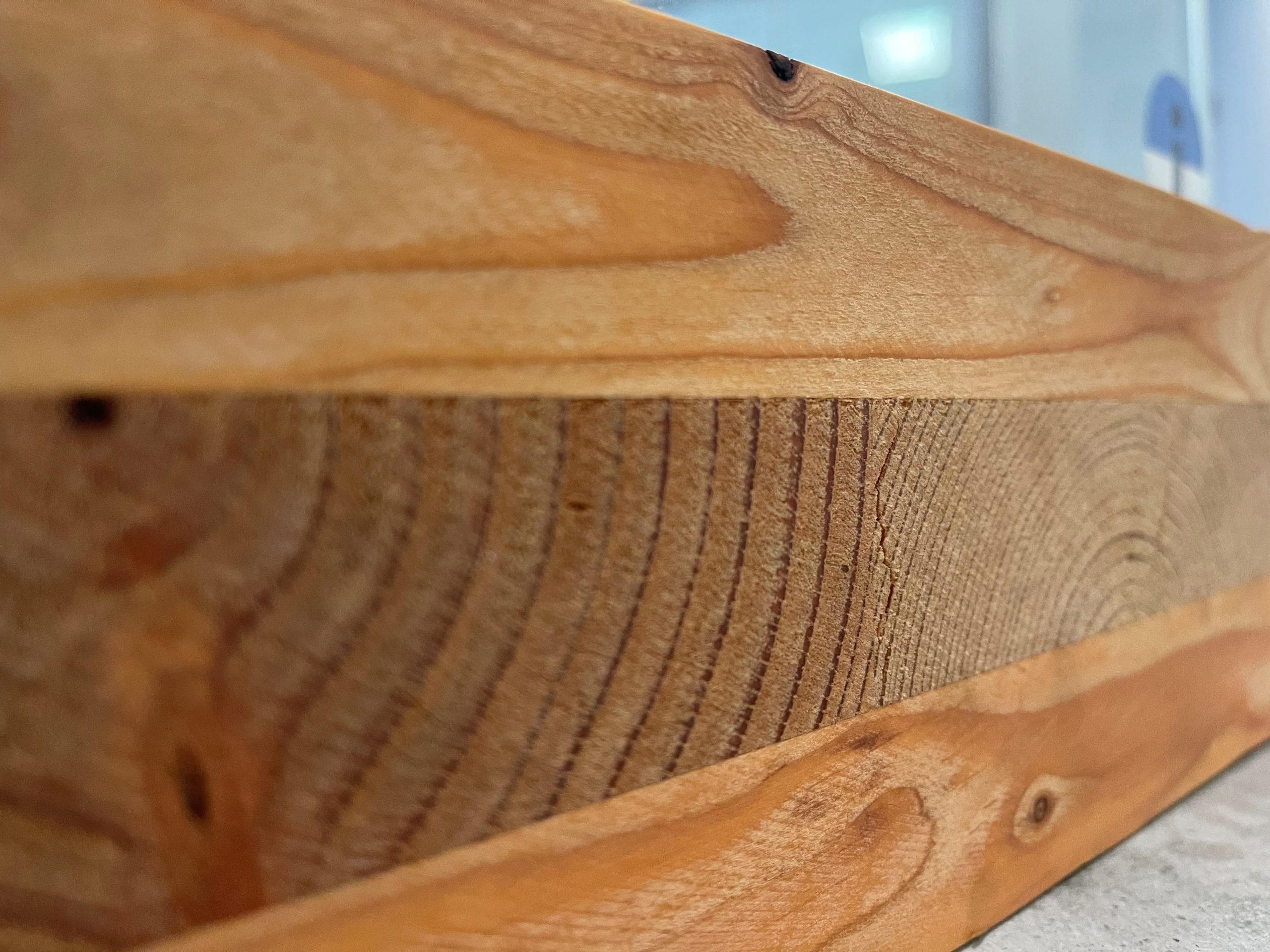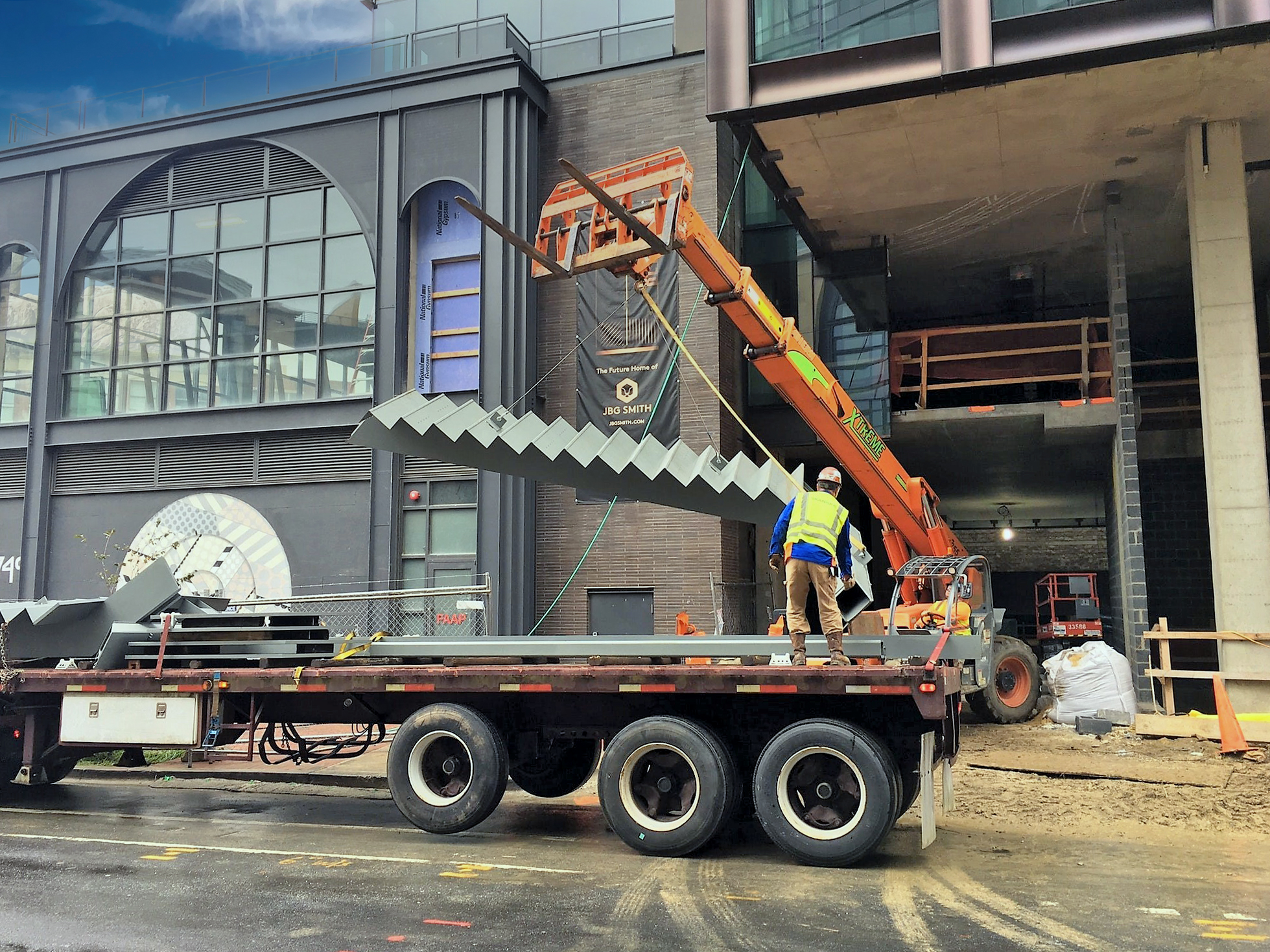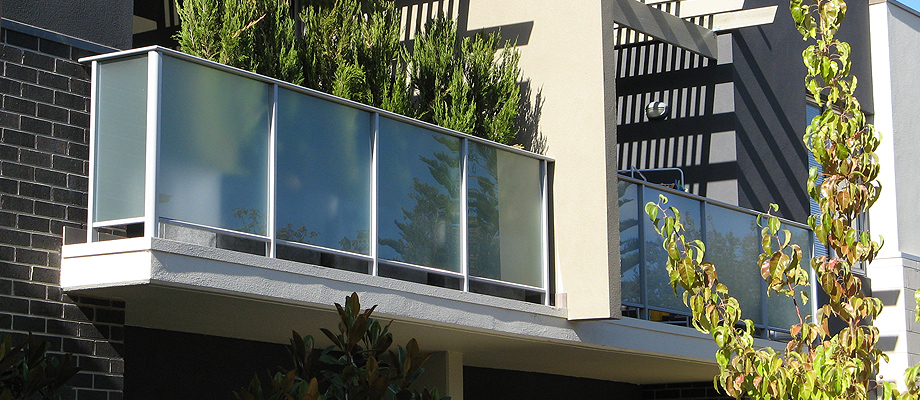General
Considerations for Integrating Monumental Stairs into Mass Timber Projects
Sharing insights gained from its recent work on some notable mass timber projects, the following article highlights five considerations Synergi suggests keeping in mind when integrating mass timber with monumental and communicating stairs.
Further questions? Get in touch with the award-winning stair specialist today.

Companies are facing an increasing need to design and build innovative and eye-grabbing projects capable of standing out in oversaturated markets. One solution, mass timber, stands out as a material capable of revolutionizing the North American construction industry over the coming decades. Much more than a cost-saving solution, a recent survey of building owners who chose mass timber over other materials cited market leadership and innovation, environmental benefits, and expedited construction schedules as motivating factors in acting as early adopters of this new technology.
Mass Timber: A Brief History
From the first multi-family wooden structures built around 4,000 B.C. to today’s light-wood frame construction (wooden structures in which smaller pieces of solid wood are used in conjunction with other materials to form low-rise buildings typically around four-stories or less) – humans have relied on wood construction for thousands of years. In the early 2000s, European manufacturers began to experiment with engineering practices to find ways to increase wood’s inherent strength while maintaining its lightweight nature and aesthetic beauty. By breaking wood down to its smallest pieces and then “reassembling” it with a variety of adhesion techniques, it was discovered that wood is transformed into a stronger, more versatile, and more flexible construction material, leading to the development of engineered wood products (EWPs).
Engineered Wood Products (EWPs)
EWPs are construction materials that combine the inherent strength of wood with modern engineering, binding strands, particles, fibers, veneers, or boards of wood together using adhesives. By disassembling and reassembling existing wood, defects are randomized, improving the predictability and overall strength of the product. EWPs have not only begun to replace steel and concrete for large-scale components like beams, columns, walls, and flooring, they are also used for features with complex geometry, including curved roofing.
What is Mass Timber?
Mass timber is not just one technology or product, but a distinct category of EWPs that presents an opportunity to reinvent the wheel when it comes to wood construction. According to architecture firm Perkins and Will, “The growing field of mass timber is a fundamental disruption of conventional concrete-and-steel approaches to building design and construction. Instead of limiting wood to low-rise, light-frame applications, we can now reimagine wood as an advanced structural system that produces communities with greater speed, efficiency, and resilience.”
Increasing Use of Mass Timber
As of June 2020, there were 384 completed mass timber projects in the United States – a steep increase from none in 2010. Mass timber is now being used in new corporate headquarters for global companies with household names – such as Google, Microsoft, Amazon, and Walmart, among others – and has been a topic of interest among major news outlets including the New York Times, the Washington Post, and National Public Radio (NPR). Industry experts predict the number of mass timber buildings to double every two years globally. Advancements in automation, robotics, and just-in-time manufacturing continue to drive prefabrication and modular construction forward, which are just some of the many factors that contribute to mass timber’s emergence and revolutionary potential in building construction.
5 Considerations For Integrating Monumental And Communicating Stairs Into Mass Timber Projects
The emergence and evolution of mass timber – particularly the CLT, NLT, DLT, and Glulam mass timber systems – have enhanced the speed and efficiency of construction with prefabricated and modular parts of precise dimensions. With its current prominent use and future revolutionary potential in the construction building materials industry, it may be tempting to consider mass timber for all new projects. And while it is an incredibly versatile material, the following five points require some careful consideration.
1. Expansion And Contraction
Expansion and contraction of the mass timber superstructure requires slip connections at stairs connecting multiple structural members to allow for overall movement in the building. The expansion and contraction of the building fabric combined with seismic demands in some locations can require the implementation of complex connections that allow movement of up to 4” in three axes.
2. Engineering Material Properties
The engineering properties of mass timber differ from traditional materials and should be considered carefully. As feature stair designs become larger and more complex, we recommend that all designs are engineered as early in the process as possible through a design assist program to ensure that accurate point loads and reactions can be provided to the engineer of record. Factoring this information into the overall building structure as early as possible eliminates the risk of needing ‘surprise’ back span beams, enlarged connections being required later in the project.
3. Scheduling
Mass timber structure is prefabricated in modules, which creates both challenges and opportunities with features like monumental stairs. Rapid construction of building structures causes mass timber buildings to be closed in faster than a traditional building, which will thus require trades delivering large components to be released earlier to avoid missing the access window. Synergi has years of expertise in the techniques of prefabrication and modularization in stair construction and offers its own prefabricated modular stair solutions.
4. Sustainability
A mass timber structure sets a sustainable tone for a project and typically require all trades to provide a high level of assistance with sustainable accreditation programs such as LEED or Living Building Challenge. Synergi recommends that consideration of materiality is completed early in the process as sustainable materials can have extensive lead times or cost premiums that could derail a project. Subcontractors should be fully evaluated on their experience of complying with sustainable building practices and ability to innovate and work with the design team to achieve the project goals.
5. Mass Timber Material Delays
As of September 2020, there were only nine factories in the United States capable of engineering mass timber. With over 500 mass timber buildings currently in either design or construction stages, companies may have difficulty obtaining the materials they need to start building. Recently, some CLT suppliers have quoted a 12-month lead time. Such long lead times can negate the improved construction timeline that prompted developers to use mass timber in the first place. Three additional mass timber facilities are currently in development in the U.S. and should open by the end of 2021, but increasing demand promises to prolong lead times for the foreseeable future.
Key Takeaway For Best Practice
Customized prefabrication used in creating mass timber panels shaves time off a project’s schedule by alleviating the issues that plague site-built construction, such as weather, traffic, noise ordinances, labor shortages, and other site constraints that slow progress. The climate-controlled factory environment in which large, engineered timber components are assembled affords increased quality control, offering a higher level of precision for the resulting building.
However, the extent to which off-site construction reduces a project’s timeline is determined by how early the design and build team can plan and coordinate off-site construction. If layout and detail optimization is offered later in the design and construction processes, significant redesign maybe required to achieve an on-budget package. This will push design work into the construction phase, with the inevitable result of otherwise avoidable change orders. Specific efficiencies and limitations of mass timber manufacturers should be included into design and logistics plans to balance the premium cost of materials and fabrication. Thus, the significant savings in field costs of a custom mass timber package are only realized if the manufacturing, design, and build teams work together from early in the design process.
The traditional design-bid-build approach without builder (and specialty subcontractor) input prior to the bid is neither a best-practice nor cost-effective. Because pre-construction coordination is central to optimizing costs on a mass timber project, it is imperative that specialty subcontractors for material fabrication and installation are engaged early in the project and utilize design-assist methodology to fully take advantage of mass timber’s many benefits.
Call or email Synergi to discuss integrating monumental or communicating stairs into your mass timber project.
Sources Cited
Forest Business Network. (2020, January). 2020 State of the Industry: North American Mass Timber. https://masstimberreport.docsend.com/view/n6c8qap47cjd99ac
Floerke, E. (2020, June 24). Deconstructing the Mass Timber Trend. JE Dunn Construction. https://www.jedunn.com/blog/deconstructing-mass-timber-trend
Central City Association of Los Angeles. (2019, March). Mass Timber: A faster, more affordable, more sustainable way to build housing. https://www.ccala.org/clientuploads/directory/whitepapers/ CCA__Mass_Timber_White_Paper_final.pdf
American Wood Council. (2016). Mass Timber in North America: Expanding the possibilities of wood building design. https://www.awc.org/pdf/education/des/ReThinkMag-DES610AMassTimberinNorthAmerica-161031.pdf
Skidmore, Owings & Merrill, LLP. (2013, May). Timber Tower Research Project – Final Report. https://www.som.com/ideas/research/timber_tower_research_project
IMA Corp. (2018). Pre-Fab Construction. https://imacorp.com/business/pre-fab-construction/
Mordor Intelligence. (2020, August). Prefabricated Building System Market – Growth, Trends, and Forecast (2020-2025) (No. 4515006). https://www.researchandmarkets.com/reports/4515006/prefabricated-building-systemmarketgrowth?utm_source=BW&utm_medium=PressRelease&utm_code=ls6ntw&utm_campaign=1264102++Th+Prefabricated+Building+System+Market%3a+Worldwide+Growth%2c+Trends+and+Forecasts+(2019-2024)&utm_exec=joca220prd
The Editors of Encyclopedia Britannica. (2021). Prefabrication | construction. Encyclopedia Britannica. https://www.britannica.com/technology/prefabrication
Terrapin Bright Green, LLC. (2012). The Economics of Biophilia: Why Designing with Nature in Mind Makes Financial Sense. http://www.lmla.com.au/wp-content/uploads/2018/10/The-Economics-of-Biophilia_Terrapin-Bright-Green-2012e.pdf
Canada’s Earth Tower – Perkins & Will. (2021). Perkins & Will. https://perkinswill.com/project/canadas-earth-tower/
ThinkWood. (2019). Timber Trends on Track to Change Architecture in 2020. https://cdn2.hubspot.net/hubfs/5577290/%234452%20Think-Wood_Timber-Trends_Downloadable%20Asset.pdf?__hstc=206820108.65131b6d3d118ecf5d4d37b7bcfb04e8.1608232037938.1608232037938.1608232037938.1&__hssc=206820108.1.1608232037938&__hsfp=2686683400

Navigating Surging Materials Costs in 2021
